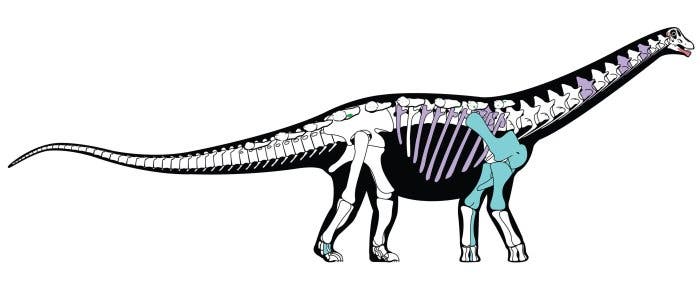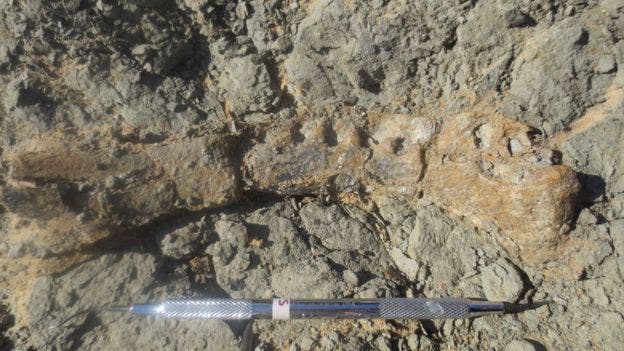Africa is a fantastic place to search for humanoid fossils but when it comes to dinosaurs, things are a bit different. That’s why this new find by paleontologists working in Egypt is thrilling: it fills up what was an empty page in the continent’s geological history.

If you think the world has changed a lot in the past few decades, you should have seen it during the Cretaceous. Some 100 million years ago, the Earth was a completely different place, with lush vegetation and a flourishing population of reptiles. Flowering plants had just emerged, but reptiles ruled the planet — both on land, and on the sea. Huge beasts, the kind the Earth has never since seen roamed on all four corners of the globe. The biggest of them all were, rather unintuitively, gentle giants.
The typical appearance of these gentle giants included a long neck and tail, as well as four sturdy legs to support their body. Mansourasaurus shahinae, the newly found species, is no exception.
Mansourasaurus lived about 80 million years ago, and the fossils suggest that individuals measured around 8 to 10 meters (26 to 33 feet) — about as big as a bus. It had a long neck and rough, bony plates on its skin. Paleontologists were excited to make the discovery, likening it to a paleontological Holy Grail.
“It was thrilling for my students to uncover bone after bone, as each new element we recovered helped to reveal who this giant dinosaur was,” said Dr. Hesham Sallam of Mansoura University, who led the research.

Study co-researcher Dr. Matt Lamanna of Carnegie Museum of Natural History said that his jaw “hit the floor” when he saw photos of the fossils.
“This was the Holy Grail,” he said. “A well-preserved dinosaur from the end of the Age of Dinosaurs in Africa that we palaeontologists had been searching for for a long, long time.”
It’s not just that this is a new and interesting species, but it starts filling up what was a rather blank page in the African fossil record. Not much at all is known of the Cretaceous dinosaurs in today’s Africa.

There’s a huge gap in the fossil record, just as the continents were undergoing severe tectonic changes, and the world was nearing one of the biggest extinctions in history. For most of the dinosaurs’ history (the Triassic and Jurassic periods), almost all of the planet’s landmass was concentrated in a single continent: Pangaea. During the Cretaceous, the continents started to split up and move towards the shape we see today. This is why scientists sometimes find the same (or very similar) species in completely different parts of the world: those different parts were once together.
“Mansourasaurus shahinae is a key new dinosaur species, and a critical discovery for Egyptian and African palaeontology,” said researcher Eric Gorscak, a postdoctoral research scientist at The Field Museum. This enables researchers to not only understand how these creatures moved and spread about, but also gives a unique insight into their evolutionary history.
Africa remains a giant question mark in terms of land-dwelling animals at the end of the Age of Dinosaurs. Mansourasaurus helps us address long standing questions about Africa’s fossil record and palaeobiology – what animals were living there, and to what other species were these animals most closely related?”
However, while this is a key finding which opens up intriguing possibilities, it’s not the last piece of the puzzle — it’s only the first one. Hopefully, there will be many more coming soon.
“What’s exciting is that our team is just getting started. Now that we have a group of well-trained vertebrate paleontologists here in Egypt, with easy access to important fossil sites, we expect the pace of discovery to accelerate in the years to come,” says Sallam.
Journal Reference: Hesham M. Sallam et al. New Egyptian sauropod reveals Late Cretaceous dinosaur dispersal between Europe and Africa. doi:10.1038/s41559-017-0455-5.


